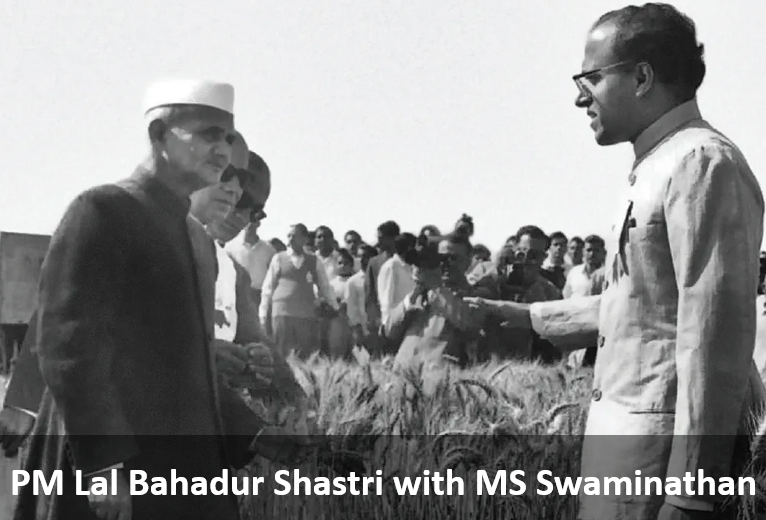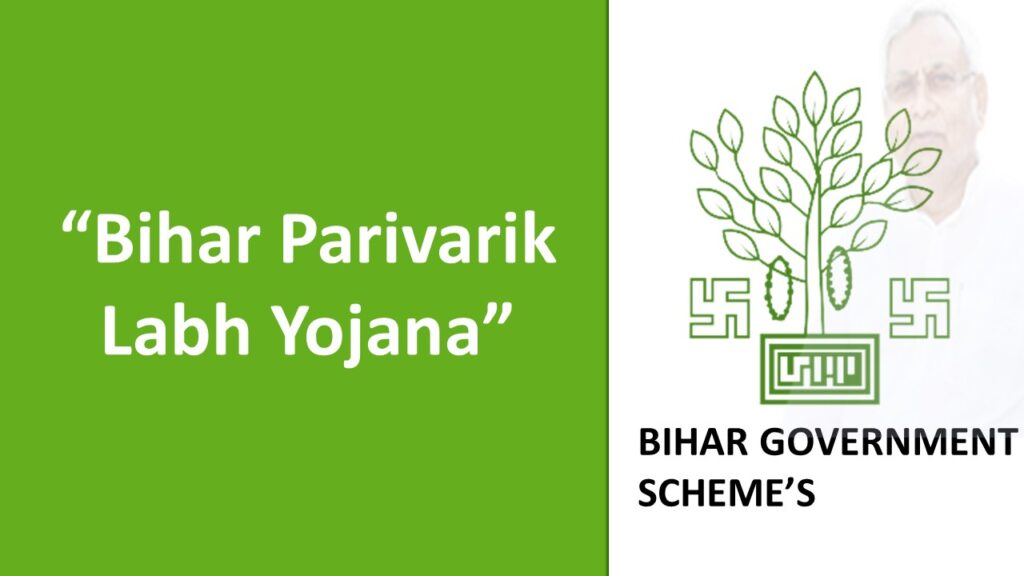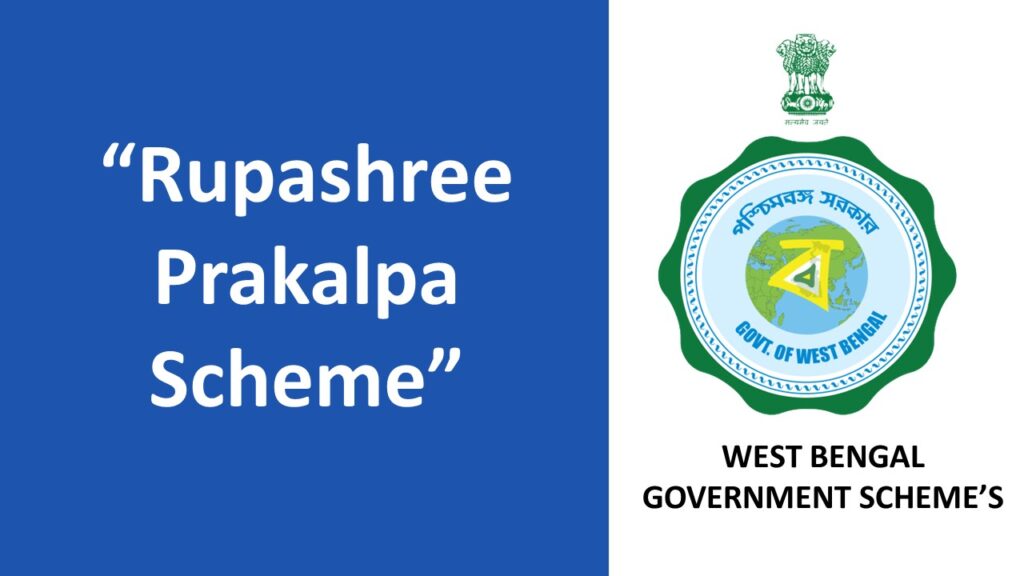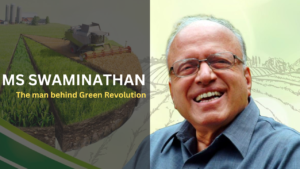Lal Bahadur Shastri once said –
“In this vast country of ours, people profess different religions, speak different languages, dress differently and observe different customs; but we are one nation; the history of our struggle for independence and our faith in our future development is our common bonds”.
Following the untimely passing of India’s inaugural Prime Minister, Jawahar Lal Nehru, a gentle yet resolute figure assumed the mantle of guiding India through challenging times. This figure was India’s second Prime Minister, Lal Bahadur Shastri. Regardless of the gravity of the situation, he consistently found solutions to address the challenges, much like he did with the Green and White Revolutions.
Lal Bahadur Shastri served as was a prominent leader of the Indian National Congress. He played a pivotal role in the Indian independence movement. His most notable achievement was guiding India through the Indo-Pakistan War in 1965, despite his relatively recent appointment to the position. Shastri recognized India’s imperative for self-reliance and autonomy, and he coined the enduring slogan “Jai Jawan, Jai Kisan,” for which he is revered to this day.
Lal Bahadur Shastri Biography
Lal Bahadur Shastri was born on October 2, 1904, in Mughalsarai, United Provinces of Agra and Oudh, British India. Interestingly, he shared his birthday with Mahatma Gandhi. Unfortunately, his father, Sharada Prasad Srivastava, who worked as a clerk in the revenue office at Allahabad, passed away during his childhood. This led his mother, Ramdulari Devi, to take him and his sisters to the house of his maternal grandfather, Munshi Hazari Lal. It was there that he was raised after his father’s demise. His mother managed to finance his education by taking a loan.
Born into a Kayastha family, it was customary for him to receive education in the Urdu language and culture. To pursue his high school education, he was sent to his uncle’s house in Varanasi. His early years were marked by numerous challenges due to the poverty he faced. He would walk barefoot for miles to school, even in scorching summers. It was during this time that he imbibed virtues such as boldness, patience, self-control, courtesy, and selflessness. Some basic details on biography is mentioned below:
| Particulars | Details |
| Lal Bahadur Shastri Birthday | Born on 2nd October 1904 at Mughalsarai near Varanasi in Uttar Pradesh |
| Lal Bahadur Shastri Jayanti | Celebrated every year on 2nd October |
| Lal Bahadur Shastri Education | Bachelor’s degree awarded to him by the Vidya Peeth |
| Lal Bahadur Shastri Wife | 1928, he got married to the Smt. Lalita Devi of Mirjapur. |
| Lal Bahadur Shastri children | 6 Childrens including Anil, Hari Krishna and Sunil |
| Lal Bahadur Shastri slogan | Jai Jawan Jai Kisan |
| Died on | 11 January 1966 (aged 61) |
Having a strong aversion to the caste system, he chose to drop his surname “Shrivastava.” Shastri found inspiration in Nishkameshwar Prasad Mishra at Harish Chandra High School, and he delved into the works of Mahatma Gandhi, Annie Besant, and Swami Vivekananda. He left school in response to Mahatma Gandhi’s call to join the Non-cooperation movement.
At the age of 17, he was imprisoned for the first time. He wholeheartedly participated in the Indian freedom struggle, enduring several arrests alongside fellow freedom fighters. In 1926, he earned the title of “Shastri” (scholar) upon completing his graduation from Kashi Vidyapeeth in Varanasi. There, he was influenced by numerous intellectuals and nationalists.
In 1928, he married Smt. Lalita Devi of Mirjapur. Although he was against the dowry system, due to Lalita Devi’s father’s persistent insistence, he accepted only five yards of khadi. The couple had six children.
Role of Shastriji in Indian Freedom Struggle
- In 1921, while he was in the 10th grade, Lal Bahadur Shastri began attending public meetings in Benares organized by Gandhiji and Madan Mohan Malviya. His high school teacher, Nishkameshwar Mishra, instilled in him a sense of patriotism, further igniting his interest in the freedom struggle.
- Shastriji left Harish Chandra High School to join the Non-Cooperation Movement, inspired by Gandhiji’s call for students to leave government schools.
- He went on to become the President of the Servants of People Society, established by Lala Lajpat Rai, which focused on the upliftment of Harijans.
- In 1928, Shastri joined the Indian National Congress and became an active member.
- By 1930, he held the position of President of the Allahabad Congress Committee.
- During the Civil Disobedience Movement, he encouraged people to resist paying land profits and taxes to the government.
- He also led a door-to-door campaign during Gandhi’s Salt Satyagraha.
- Additionally, in 1937, he was elected to the UP Legislative Assembly and served as the Organising Secretary of the U.P. Parliamentary Board.
- During his imprisonment in 1942, Shastri devoted his time to studying the works of social reformers and Western philosophers. After his release from jail, he continued to provide guidance to independence activists for a week, particularly during the Quit India movement.
Role of Shastriji after Independence
- After India gained independence, Shastri dedicated himself to the country’s development and the preservation of its unity. Following the formation of the Congress government in 1946, he was invited to play a constructive role.
- In 1951, he was appointed as the General Secretary of the ‘All-India-National-Congress’. Shastri played a crucial role in the General Elections of 1952, 1957, and 1962. Starting as the Parliamentary Secretary of Uttar Pradesh, he progressed to the position of Home Minister. In Nehru’s absence due to illness, Shastri served as Minister without Portfolio.
- On May 23, 1952, Shastri was appointed as the Rail Minister in the Union government. He initiated a third-class railway for the disadvantaged sections of society. However, a tragic rail accident occurred, resulting in casualties. In a display of moral responsibility, Shastri resigned from his position.
- As the Minister of Police under Chief Minister Govind Vallabh Pant of Uttar Pradesh, Shastri worked diligently. He ensured law and order in the state, instructing the police to use water rather than batons to disperse crowds. In 1947, he successfully managed to control riots. Overall, his tenure as a minister of state Police was marked by effectiveness.
- In May 1964, Jawaharlal Nehru passed away, and Lal Bahadur Shastri assumed office as the second Prime Minister of the Republic of India, serving under President Dr. Sarvapalli Radhakrishnan.
- Shastri pioneered the establishment of the Prime Minister’s Office (PMO) by appointing a secretary, a senior ICS officer, to advise him.
- In 1964, he catalyzed the White Revolution in India by supporting the Amul Milk Cooperative in Anand, Gujarat. During the same year, he founded the National Dairy Development Board (NDDB) in Anand
- In response to the growing food crisis in the country, Shastri initiated the Green Revolution in 1965 with the help of MS Swaminathan.
- During the 1965 Indo-Pak war, Shastri adeptly handled the situation despite adverse circumstances. That same year, India faced a food crisis. Shastri coined the slogan “Jai Jawan and Jai Kisan” to rally the nation. Renowned for his integrity and industriousness, he served as Prime Minister for 18 months.
- In January 1965, he established the Agricultural Prices Commission (APC), alongside the creation of the Food Corporation of India (FCI).
- Furthermore, he played a key role in the setup of the National Seeds Corporation and the Central Warehousing Corporation.
India’s Diplomatic Relation during Shastriji
Lal Bahadur Shastri’s term in office was characterized by significant events such as
- the Indo-Ceylon Agreement,
- the deportation of Indian families from Burma, and
- the Indo-Pak war of 1965.
Indo-Ceylon Agreement
The agreement, signed in 1964 between the Prime Ministers of both nations, held great importance in defining the status and prospects of the descendants of Indian-origin individuals in Ceylon (later Sri Lanka), who were the subsequent generations of the tea estate laborers brought there by the British.
Deportation of Indian families from Burma
- In the aftermath of a military coup in 1962, Burma deported numerous Indian families in 1964. This event led to a strain in relations between India and Burma.
- In 1965, Shastriji undertook an official visit to Rangoon, which played a pivotal role in re-establishing cordial relations between the two nations.
Indo-Pak war of 1965
- Also known as the Second Kashmir War, it marked the culmination of numerous skirmishes between India and Pakistan in 1965.
- The conflict initiated with Pakistan’s operation Gibraltar, aimed at infiltrating forces into Jammu and Kashmir.
- Despite being a staunch adherent of Gandhiji’s principle of non-violence, Shastriji displayed remarkable courage in leading India through the war.
- He rallied the nation with the slogan “Jai Jawan, Jai Kisan” – a tribute to both the farmers combatting the food crisis and the soldiers defending the border.
- The hostilities ceased after a ceasefire was declared through UNSC resolution 211, facilitated by diplomatic intervention from the Soviet Union and the United States, ultimately leading to the Tashkent Declaration.
Contribution of Lal Bahadur Shastri in Nation Building
Lal Bahadur Shastri is forever remembered for championing two transformative movements: the Green Revolution and the White Revolution, both aimed at fostering self-reliance. The Green Revolution primarily focused on augmenting the production of food grains, particularly wheat and rice. This initiative took root in Punjab in 1966-67 and subsequently extended its reach across the nation.
White Revolution
Shastriji was a staunch advocate for the White Revolution, advocating for increased milk production and distribution. This led to the establishment of the National Dairy Development Board, and he also extended support to the Amul milk cooperative in Anand, Gujarat. The success of milk cooperatives in fulfilling the milk requirements of the people and elevating the living standards of those involved in these cooperatives is referred to as the White Revolution.

National Dairy Development Board
In 1964, the then Prime Minister of India, Lal Bahadur Shastri, paid a visit to Kaira. Following his discussions with Dr. Kurian, he expressed a strong interest in replicating the success of this cooperative model in other parts of India.
The Prime Minister’s enthusiasm led to the establishment of the National Dairy Development Board (NDDB) in 1965, with its headquarters in Anand. Dr. Kurian served as its inaugural chairman, leading the organization until 1998. The primary objective of the NDDB was to fortify farmer cooperatives and formulate policies that would be advantageous for these institutions. It held the vision of leveraging dairying as a tool for the development of rural India.
| Operation Flood In 1969, the National Dairy Development Board introduced a dairy development program with the aim of establishing a robust, self-sustaining national dairy industry. This program aimed to connect rural milk production with urban milk marketing through cooperatives. With technical support from the United Nations Development Programme (UNDP) and the Food and Agriculture Organisation (FAO), the program was launched as ‘Operation Flood’ in 1970. It heavily relied on the expertise and resources of the Kaira Union. The objective was to replicate the successful ‘Anand Pattern’ in other milk-producing regions across the country. Objective The primary objectives of organizing milk producer cooperatives into a nationwide network were: (a) Boosting milk production significantly (referred to as a surge of milk) (b) Establishing a direct link between producers and consumers by eliminating intermediaries (c) Enhancing rural income (d) Ensuring fair pricing for consumers |
Green Revolution
The Green Revolution represents India’s pivotal shift from relying on food imports to achieving self-sufficiency, eventually transforming into a surplus-producing nation. This transformation was catalyzed by substantial technological advancements in Indian agriculture starting from the mid-1960s. Dr. M.S. Swaminathan, an accomplished Indian geneticist and biologist, spearheaded this ambitious endeavor under Lal Bahadur Shastri.

While Indian agriculture experienced a modest growth of about 3% between 1949 and 1965, the country grappled with a food shortage, particularly in the early 1960s. This was primarily attributed to a surge in population post-independence, a gradual but consistent rise in per capita income, and an increasing allocation towards planned industrialization. These combined pressures on Indian agriculture hindered its ability to meet the escalating demands.
Lal Bahadur Shastri Legacy
Lal Bahadur Shastri was, without a doubt, one of the most honest Prime Ministers and politicians in India’s history. Despite holding ministerial positions, he did not accumulate any wealth, exemplifying a steadfast commitment to Gandhian principles of eschewing personal material possessions.
In 1966, he was posthumously honored with the Bharat Ratna, and a commemorative stamp featuring him was issued in the same year. He earned the moniker “The Man of Peace” due to his consistent preference for maintaining amicable relations with neighboring countries through diplomatic and non-violent means.
In his honor, the IAS training institute in Mussoorie was named the Lal Bahadur Shastri National Academy of Administration (LBSNAA).
Mysterious Death of Shastriji
On January 10, 1966, Pakistan’s President Ayub Khan ratified the Tashkent Agreement, a peace treaty that concluded the 17-day war between India and Pakistan. The agreement was signed amidst great strain. Tragically, the very next day, Shastriji passed away. While doctors stated that he died of a cardiac arrest, his wife held a different belief. She suspected that Shastriji had been poisoned. The Russian butler, who had been arrested on suspicion of being involved in Shastriji’s death, was soon released after medical professionals confirmed cardiac arrest as the cause of death. His passing remains one of the enigmas in history.
FAQs
When is Lal Bahadur Shastri Jayanti celebrated?
Lal Bahadur Shastri Jayanti celebrated every year on 2nd October.
What was Lal Bahadur Shastri slogan?
Lal Bahadur Shastri slogan is “Jai Jawan, Jai Kisan”
What were the two major challenges India was facing before Shastriji became PM?
The country faced two major challenges. While India was still recovering from the economic implications of the war with China (1962), failed monsoons, drought and serious food crisis presented a grave challenge
Who was the first person to be posthumously awarded the Bharat Ratna?
Lal Bahadur Shastri was the first person to be posthumously awarded the Bharat Ratna.







